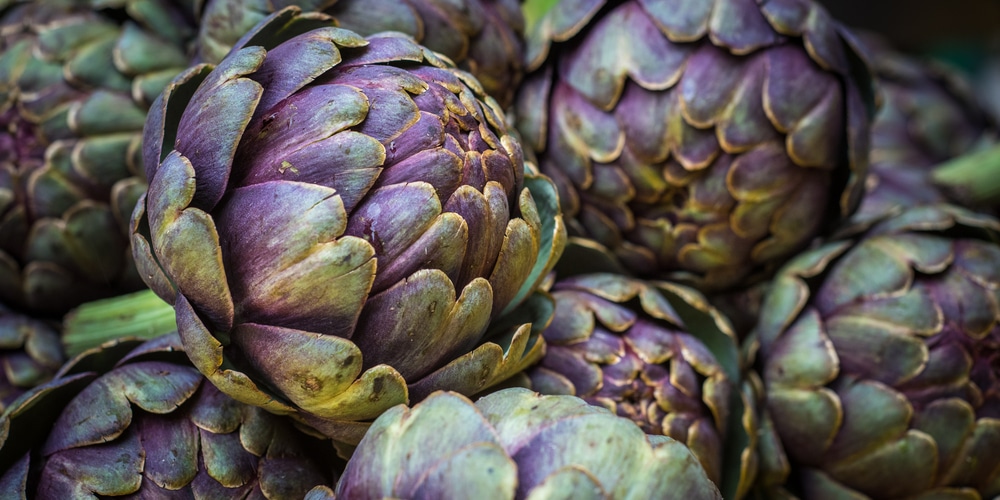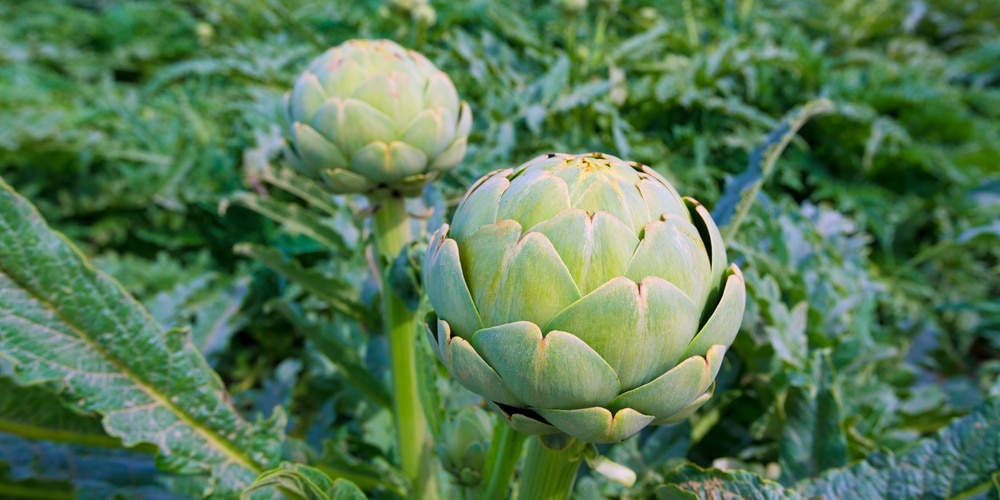Artichokes are vegetables that we associate with summer and hot temperatures. After all, they are one of the primary cultivars of sunny California. They are native to the Mediterranean and do best in warm climates. But what about colder places? Can you grow artichokes in milder climates, where winter temperatures might get low? If you want to find out, keep reading.
The plant belongs to the same family as dandelions and sunflowers. Many people harvest these plants for their edible flower buds, which you should pick before the blooms open.

Your region’s climate conditions will make a difference in how long your plants will last. As you might expect, these summery vegetables grow best in warm climates. Between zone 8 and 11, you can grow them as perennials with little problem.
However, that doesn’t mean you can’t grow them in colder regions. Yes, you will have to take proper care of your plants for them to thrive, but with effort, you will be able to enjoy artichokes even in USDA zones below 8. Indeed, with care, you can grow artichokes as perennials in zones 5 and 6, especially when winters are mild.
In this “Growing Artichokes in Zone 6” essential guide, you’ll find what to need to create optimal conditions for these plants to thrive in your garden. The good news is that it is not as challenging as you may be thinking. If you are ready to learn how to grow artichokes in your region, jump to the following section.
Growing Artichokes in Zone 6
For starters, if you don’t live in USDA hardiness zones above 8, you must pick an artichoke variety that will tolerate even low temperatures. Green Globe, Northern, or Imperial Star are perfect for zone 6.
These species have shorter growing seasons, making them more tolerant to low temperatures than most other types of artichokes. Keep in mind that your plant won’t produce the delicious edible flowers before their second year of life: you must protect them from the low temperatures during the winter to be successful.
Start your seeds indoors about ten to twelve weeks before the last average frost date. Make sure you check your local weather to choose the proper time. Then, transplant your artichokes about three to four weeks before the last frost.
After growing the plant for a season, you must overwinter your artichokes. In zone 6, that means recreating the optimal conditions for these plants to survive the low winter temperatures.
For starters, add a deep layer of mulch around your plants. Doing so will regulate soil temperatures, increase water retention, and improve the nutrient content. Plus, it will help insulate the ground’s temperatures, especially during the coldest months of the year.
Alternatively, you can consider growing artichokes in containers and moving them indoors or in protected areas of your garden to prevent exposing them to harsh winter temperatures. Plant your artichokes in rich potting mix and compost.
You can also save your plants by digging them up and storing them until temperatures become more bearable. If you expect frost, cut your artichokes to the ground and ensure you don’t disturb their roots. Gently shake as much soil as possible before storing your plants in a box of peat moss somewhere cool like a garage or a fridge. Replant your roots when spring comes.
Plant your artichokes under full sun or partial shade. Because you don’t live in the warmest regions of the country, direct sunlight won’t damage your plants. Favor a sunny location over a shady one if you can choose. Also, place your plants in well-draining soil that is rich in nutrients. Water them regularly without leaving the ground wet, as that might cause root rotting. However, droughts might cause the flower buds to open into a purple flower, making the choke inedible. Stick to a consistent routine to avoid issues.
Growing Artichokes in Zone 6: The Bottom Line
While growing artichokes in zone 6 is not impossible, it requires additional care. You will have to protect your plants from low temperatures and possibly overwinter them using the tips we suggested in this guide. However, with adequate attention and effort, you will be able to harvest artichokes successfully for at least a couple of years! Give these delicious plants a try and consider planting them in your zone 6 yards!
You may also like: Zone 6 Fruit Trees
